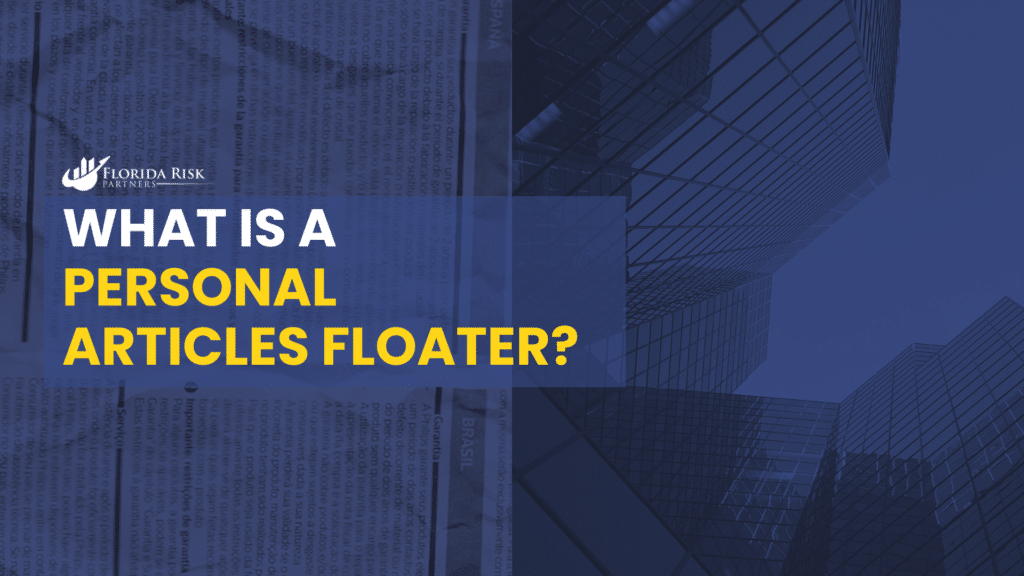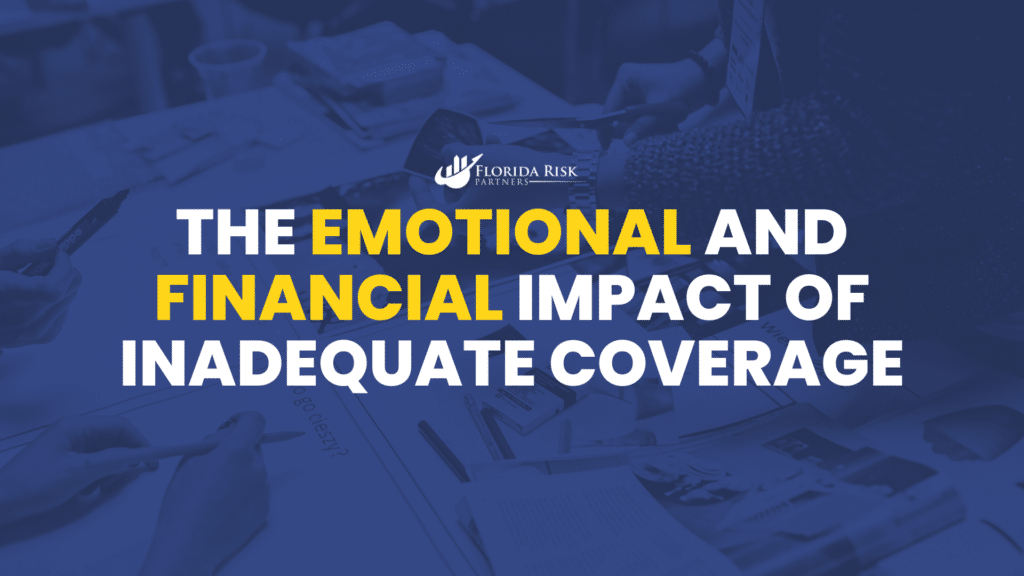-
Main Office: 1434 E. Bloomingdale Ave Valrico, FL 33596-6110
-
Phone: (888) 601-6660
-
Email: info@floridariskpartners.com

Many homeowners assume their standard policy fully protects their personal belongings. They believe the personal property section covers them. Unfortunately, this assumption is only partly true. Many realize the gap only after a loss occurs. To safeguard valuable items, homeowners may need a Personal Articles Floater. This additional coverage protects high-value items like jewelry, art, and collectibles. A standard policy may not fully cover these items.
Homeowners insurance covers some personal items but includes limits and exclusions. These exclusions can leave you underinsured. Policies set strict sublimits on items like jewelry, electronics, and fine art. They often exclude these items from reimbursement for theft, loss, or disappearance. As a result, many homeowners face significant gaps in coverage.
A Personal Articles Floater (PAF) offers tailored protection and peace of mind. It provides a higher level of coverage than a basic homeowners policy. In this 12-week series, we will explore PAFs in detail. We will explain what they are, why they matter, and why homeowners should add them to their insurance portfolio.
Understanding the Limits of Homeowners Insurance
Your homeowners insurance policy is designed to protect your dwelling, other structures on your property, and your personal belongings. While the personal property coverage is certainly useful, it has limitations, particularly when it comes to high-value or unique items. These limits are outlined in your policy, and most people never take the time to read them until it’s too late.
Let’s break it down with a few examples. Under a typical homeowners insurance policy:
- Jewelry may be capped at $1,500 to $2,500 total for theft—not per item.
- Firearms are often limited to $2,500.
- Silverware and fine china may be limited to $2,500 as well.
- Electronics, especially if used for work or business, may be covered up to a limit that’s far below their replacement value.
- Musical instruments, collectibles, antiques, and fine art may have no coverage at all unless scheduled separately.
Even more problematic is that these sublimits apply not just to theft or damage but also to loss scenarios that are more common than people realize—like misplacing an item or having it mysteriously disappear during travel or a move. Homeowners policies rarely cover these types of incidents.
What Is a Personal Articles Floater?
A Personal Articles Floater is a form of supplemental insurance coverage that fills in the gaps left by a standard homeowners policy. It allows you to schedule specific valuable items and protect them at their appraised or agreed-upon value, with far broader and more customizable coverage terms than your primary policy offers.

You can either purchase a personal articles floater as an endorsement to your homeowners policy or as a stand-alone policy, depending on your insurance provider. Either way, the purpose is the same: to ensure that the things that matter most to you—financially or sentimentally—are properly insured against common risks.
What Items Should Be Scheduled on a Floater?
Many people are surprised to learn how many everyday valuables qualify for a personal articles floater. If you own any of the following, you should strongly consider floating them:
- Engagement rings and wedding bands
- Watches and designer jewelry
- Firearms
- Cameras, lenses, and photography gear
- Musical instruments
- Fine art, antiques, and rare collectibles
- Designer handbags and fashion items
- Golf clubs, bicycles, and sports equipment
- Drones, laptops, and high-end electronics
- Wine collections, coin collections, and memorabilia
Even if you don’t think of yourself as a “collector,” you may be surprised how quickly the value of your belongings adds up. A designer handbag collection, for example, or a set of high-end golf clubs could easily surpass homeowners policy limits without you realizing it.
The Advantages of a Personal Articles Floater
So, what makes a personal articles floater so valuable compared to homeowners insurance? There are several advantages that set it apart, both in terms of coverage and claims experience:
1. Higher Coverage Limits
PAFs provide much higher limits than homeowners policies, usually based on the item’s appraised or market value. This means you’ll be made whole after a loss without relying on restrictive sublimits.
2. Coverage for Mysterious Disappearance and Loss
One of the most important distinctions is that a floater will typically cover loss or mysterious disappearance, not just theft or damage. If you lose your engagement ring while swimming, or misplace a valuable camera while traveling, a floater may cover that loss—something your homeowners policy would most likely exclude.
3. Worldwide Protection
A floater provides worldwide coverage. Whether you’re traveling overseas, moving across the country, or taking valuables on vacation, your items are still protected.
4. No Deductible (In Most Cases)
Most personal articles floaters do not have a deductible, which means if a covered item is lost or stolen, you’ll receive the full insured value with no out-of-pocket cost.
5. Agreed Value Settlements
Many PAFs are written on an agreed value basis, which means the insurance company and policyholder agree in advance on what the item is worth. If there’s a total loss, that’s the amount you receive—no depreciation, no haggling.
The Emotional and Financial Impact of Inadequate Coverage

For many policyholders, a personal articles floater becomes important only after they experience a loss. Imagine losing a diamond pendant passed down from your grandmother or having someone steal your wedding ring during a trip. Even if you could replace the financial value, the sentimental value and emotional attachment make the loss even harder to bear.
Unfortunately, we’ve seen countless situations where people assumed they were covered, only to learn that their policy didn’t include the item or limited their payout to a fraction of the item’s actual value. A PAF not only provides the proper financial protection but also gives you peace of mind, knowing that the right coverage backs your irreplaceable items.
How Much Does a Personal Articles Floater Cost?
One of the most common objections to purchasing a floater is concern about cost—but the truth is, this type of coverage is usually quite affordable. Depending on the item, location, and insurance carrier, premiums typically range from $1 to $2 per $100 of insured value per year.
So for example, a $5,000 engagement ring might cost as little as $50–$100 per year to insure. That’s a small price to pay for full replacement value and comprehensive protection.
Getting Started: Inventory and Appraisals
To add a personal articles floater to your insurance portfolio, the first step is to inventory your valuable items. You’ll want to:
- List out the item name and description
- Record the value (purchase price or appraised value)
- Note the date acquired
- Gather receipts or appraisals
- Take photos of each item
- Record serial numbers, if applicable
For high-value items such as fine jewelry, art, or collectibles, a professional appraisal may be required. Your insurance agent can guide you on what’s necessary for underwriting approval.
A Smarter Way to Protect What Matters
Your home is filled with stories, memories, and investments—many of which go far beyond walls and furniture. Whether it’s your engagement ring, the guitar you’ve played since college, or your grandmother’s antique silverware, these items deserve protection that’s just as special as they are.
A Personal Articles Floater isn’t just another insurance policy—it’s a smart, strategic way to make sure you’re not left with regrets when the unexpected happens.
Over the next 12 weeks, we’ll dig deeper into the world of personal property protection. We’ll explore real-life claim stories, breakdown blanket vs. scheduled coverage, walk you through appraisals, and even cover how to protect your valuables while traveling.
Call Us Or
Schedule an Appointment
Select an agent below to view our online calendars and select a day and time that works best for you or call us directly at 888-601-6660. When you use our online calendars, you will receive an email with more information.



